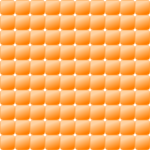Wikijunior:Introduction to Mathematics/Numbers
New Words[edit | edit source]
- Place Amount
- Numeral
Lesson[edit | edit source]
Normal Numbers[edit | edit source]
Normal numbers are the numbers you use most often. They show an amount of separate things. The picture under shows how normal numbers show how many of a thing. 0 (Zero) is a special number for when there is nothing.

|
Numerals and Place Amounts[edit | edit source]
A number is one or more signs that are called numerals (like a word is one or more signs that are called letters). There are ten numerals (0, 1, 2, 3, 4, 5, 6, 7, 8, 9) that can make most numbers. Each numeral has a place in a number and shows a different amount when it is in a different place. The place amount is the amount a numeral shows in a place.
The first place (going from right to left) has a place amount of one, and it is the Ones Place. A numeral in the Ones Place shows the normal amount. The next place has a place amount of ten, and it is the Tens Place. Numerals in the Tens Place show how many groups of ten. The next place is the Hundred Place because one hundred is ten groups of ten. The next place is the Thousand Place because one thousand is ten groups of one hundred. A place amount is a group of ten of the place amount one place to the right.
| 7 | 7 ones |
| 9 | 9 tens |
| 8 | 8 hundred |
| 2 | 2 thousand |
| 6 | 6 ten thousand |
| 4 | 4 hundred thousand |
| 3 | 3 million |
If every number had a special sign, then you would need a big book of signs to know all the numbers. This system of numerals and place amounts is useful because ten signs can make many numbers.
More, less, and equal[edit | edit source]
Often it is useful to look at two amounts and show which one is more, less or equal to the other. Math has special signs to show this.
The equals sign is two lines like this: " = ". Use it between two amounts that are the same. These are some examples:
The more than sign is a bent line like this: " > ". Use it to show that an amount on the left of the sign is more than an amount on the right. These are some examples:
The less than sign is a bent line like this: " < ". Use it to show that an amount on the left of the sign is less than an amount on the right. These are some examples:
These are some signs people use less often:
- The not equal sign is this: " ≠ ". Use it between two amounts that are not the same. An alternative is " != ".
- The more or equal sign is this: " ≥ ". Use it to show that an amount on the left of the sign is more than or the same as an amount on the right. An alternative is " >= ".
- The less or equal sign is this: " ≤ ". Use it to show that an amount on the left of the sign is less than or the same as an amount on the right. An alternative is " =< ".
































